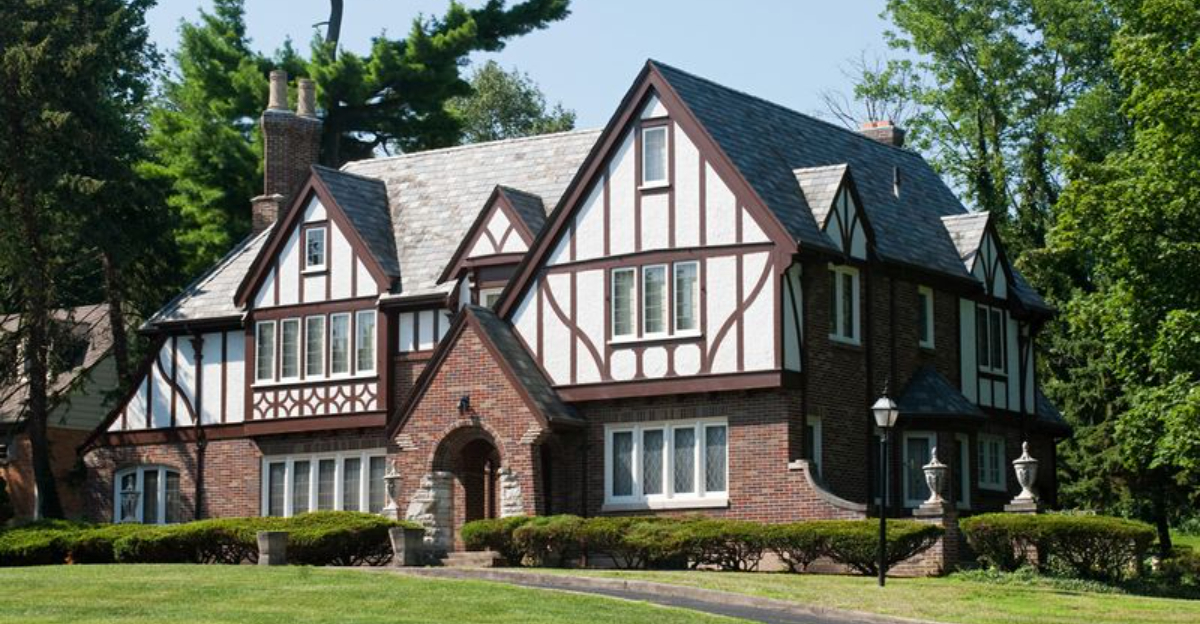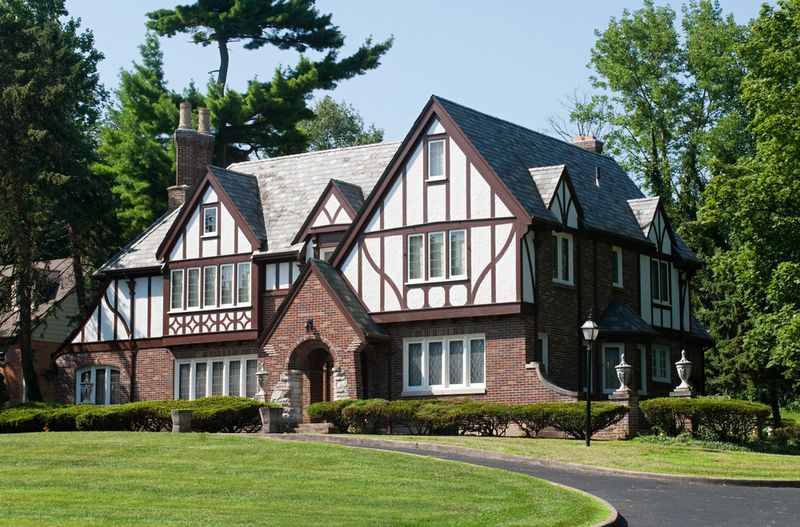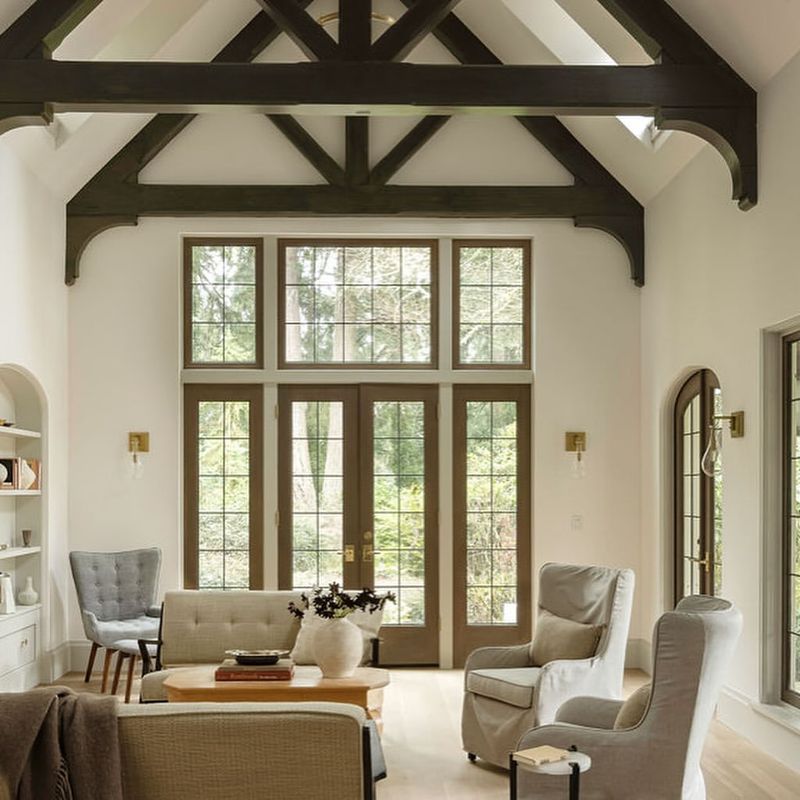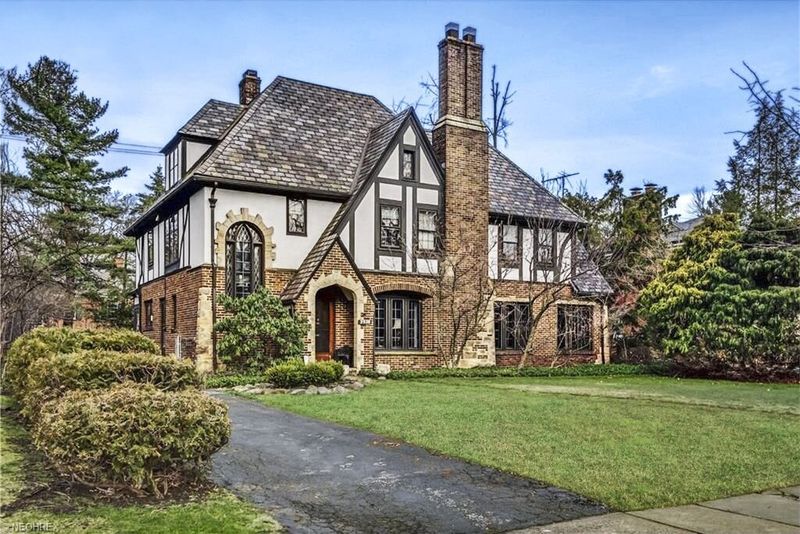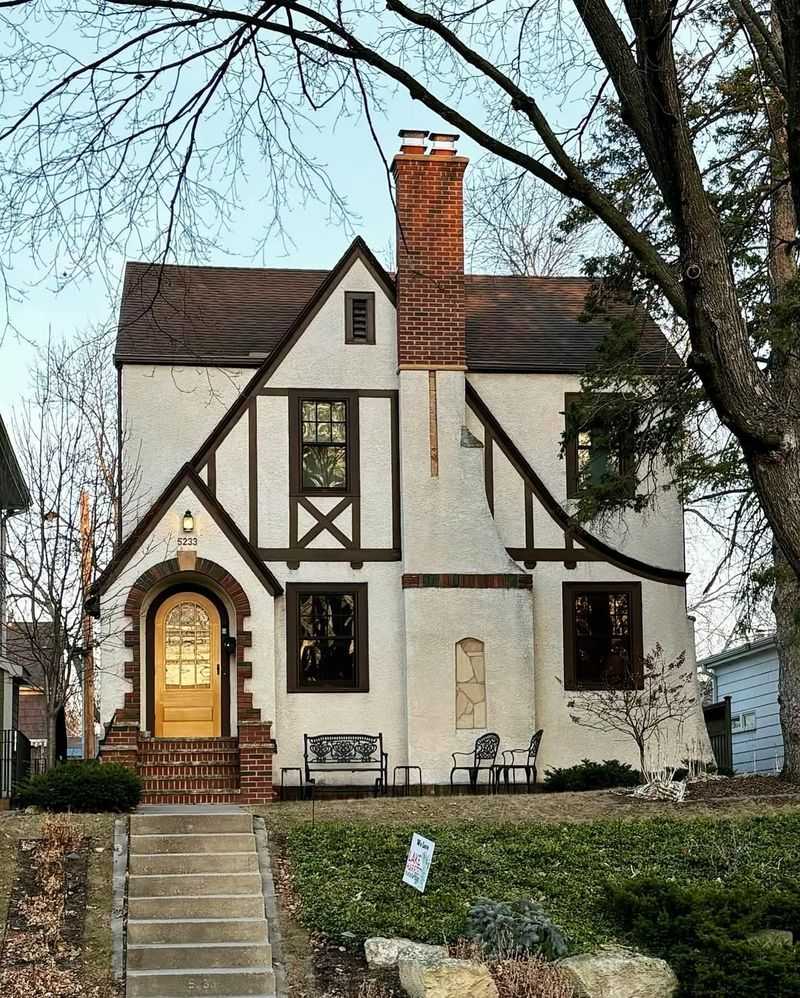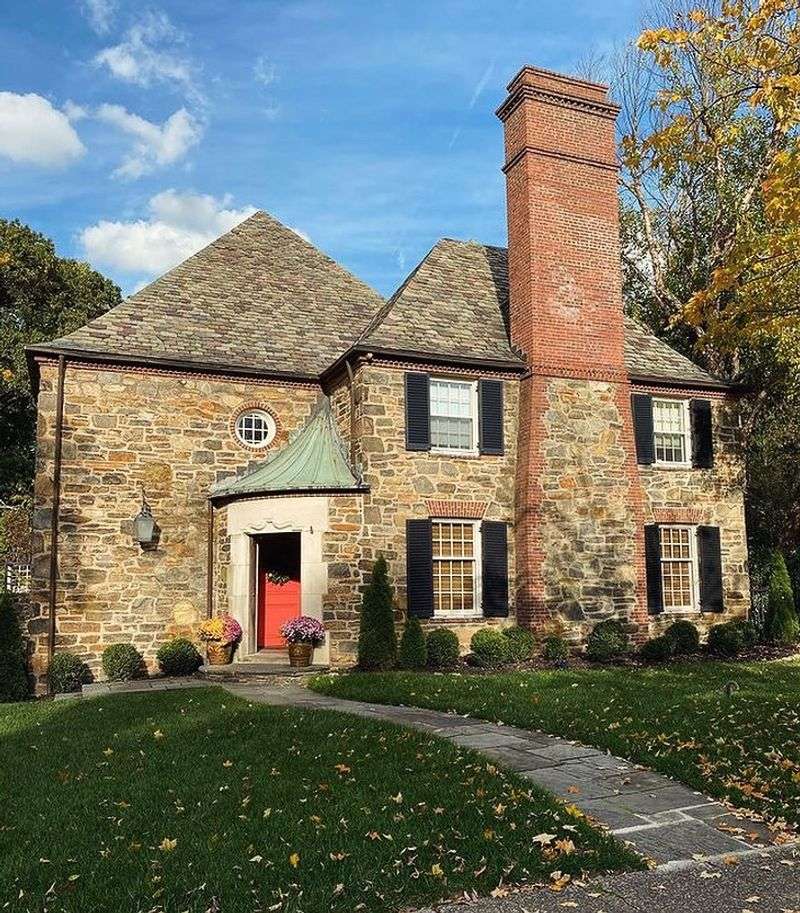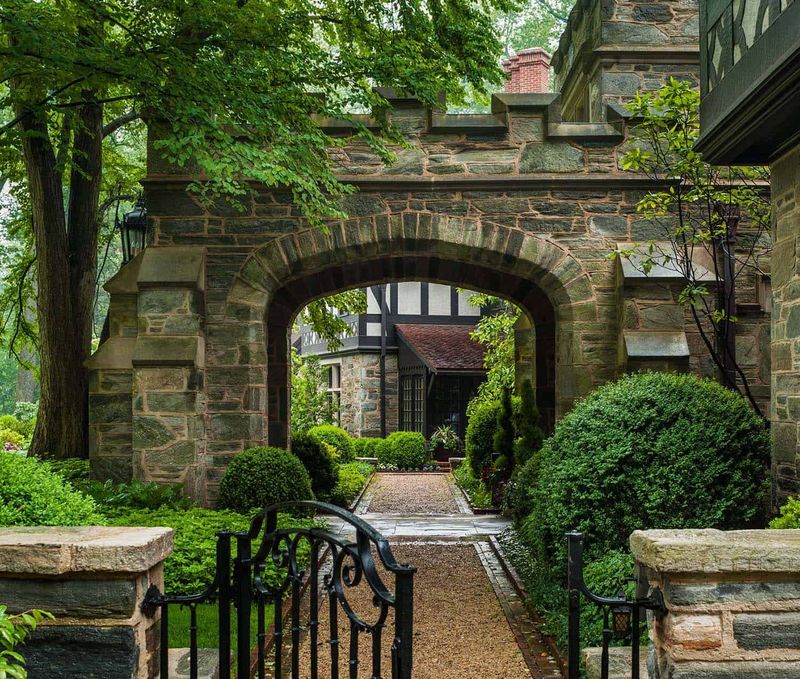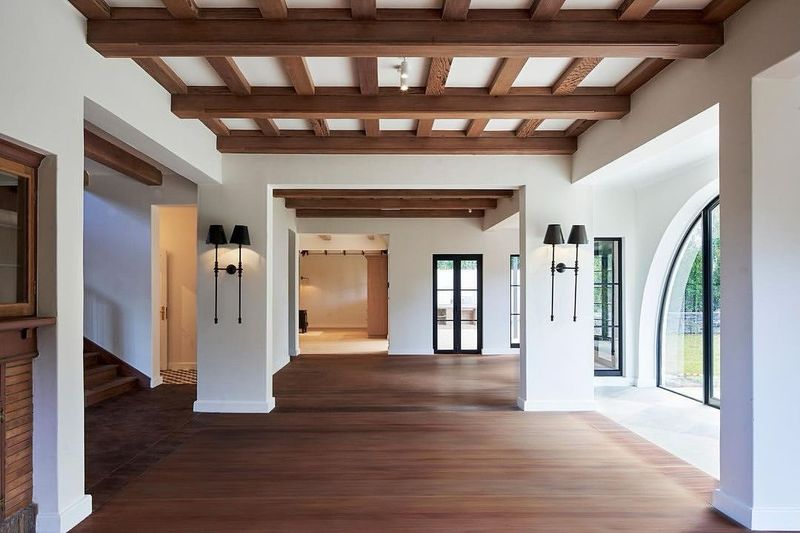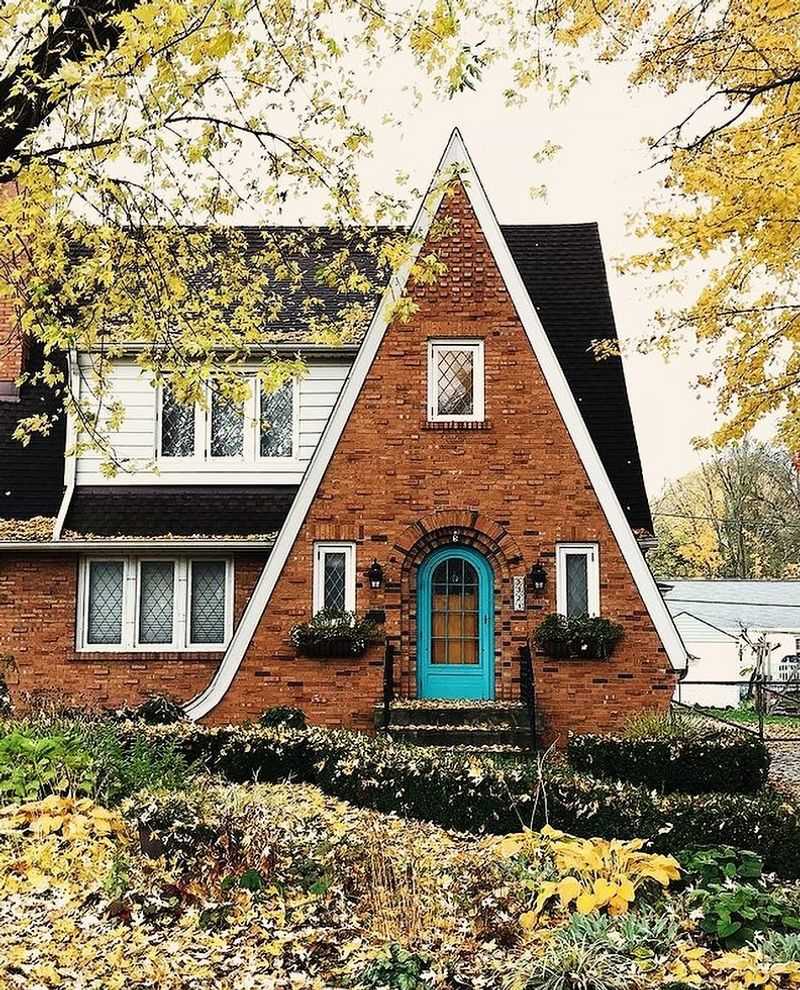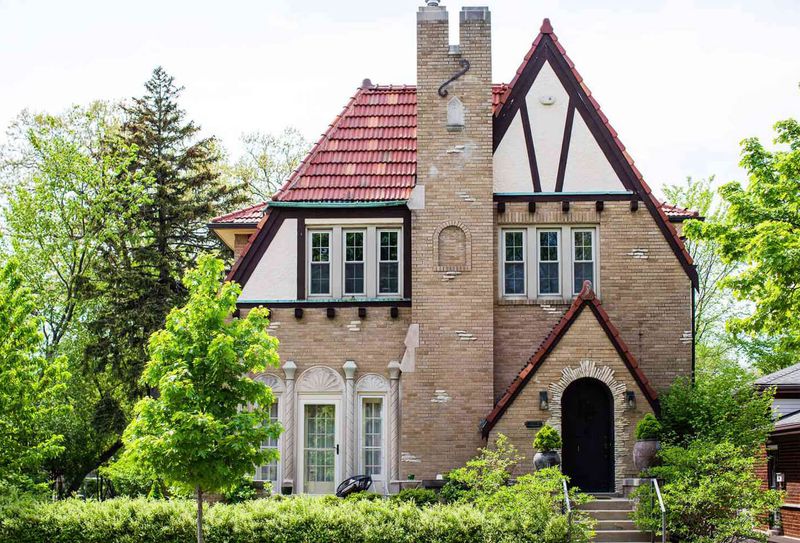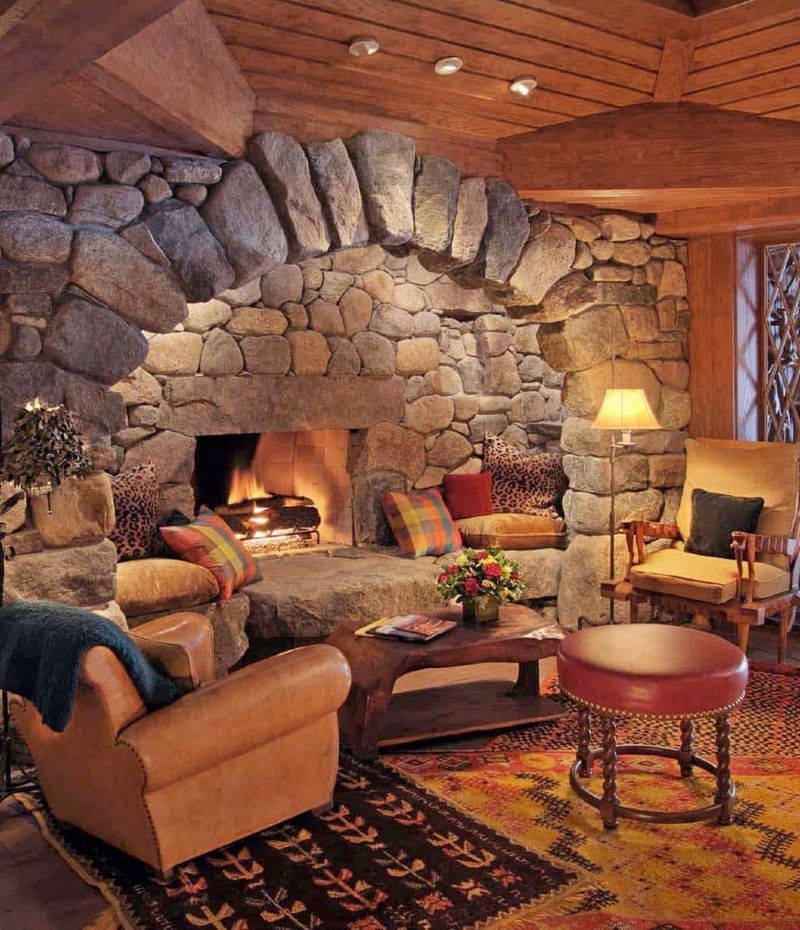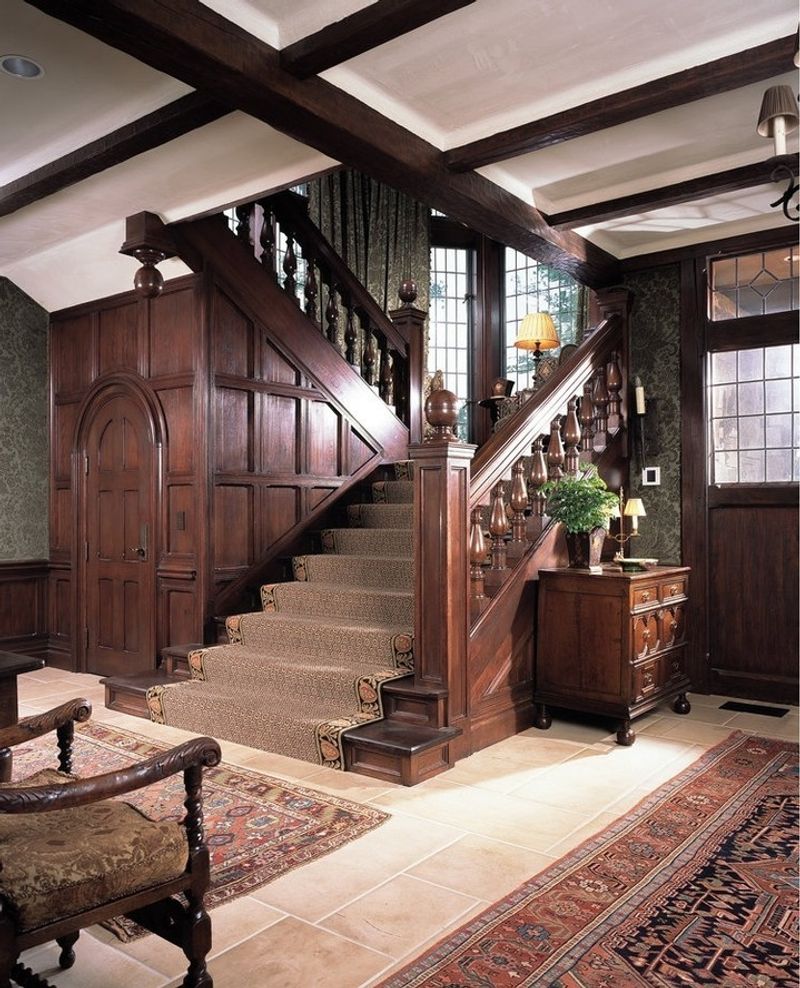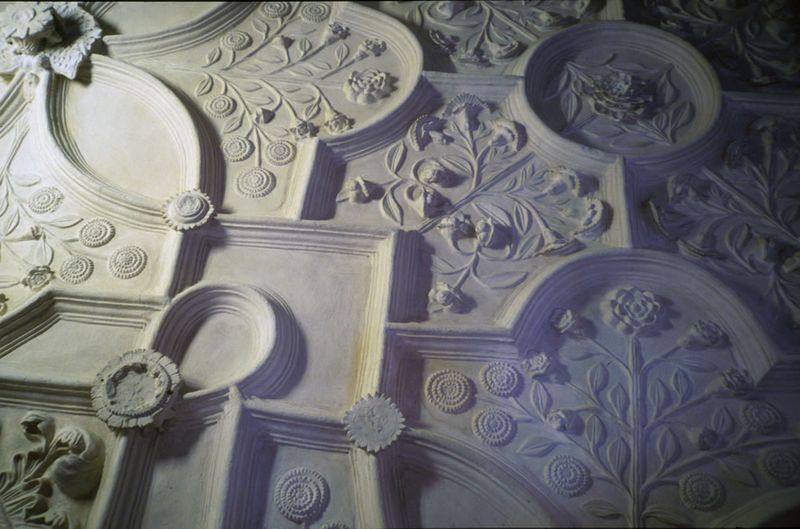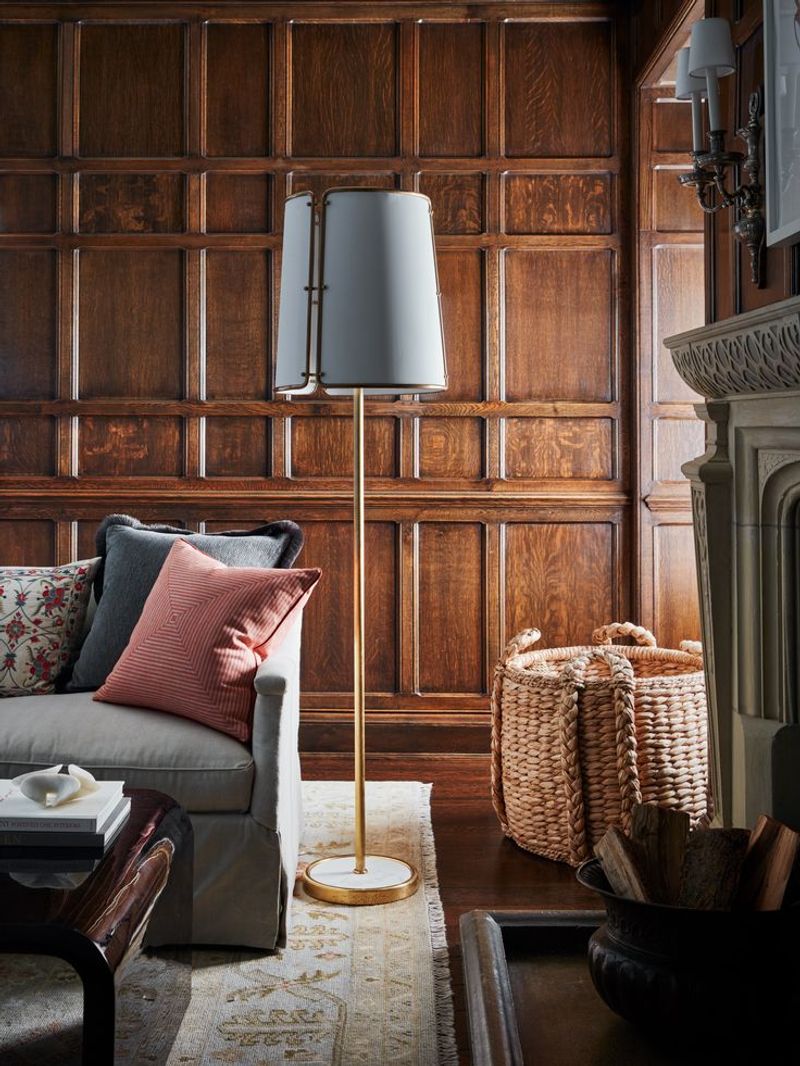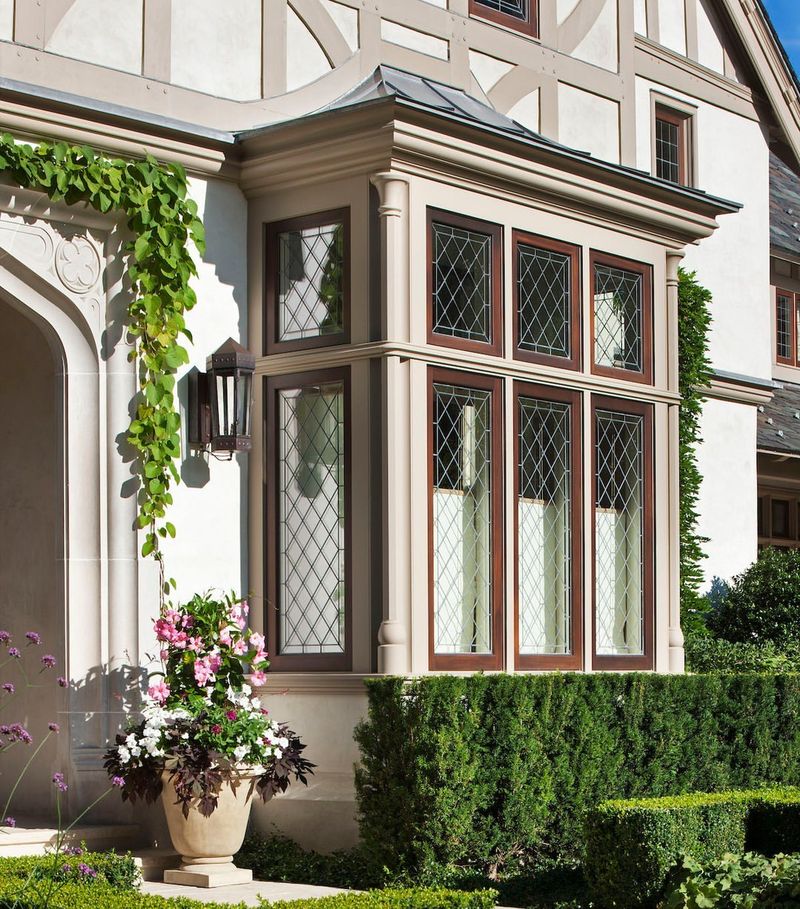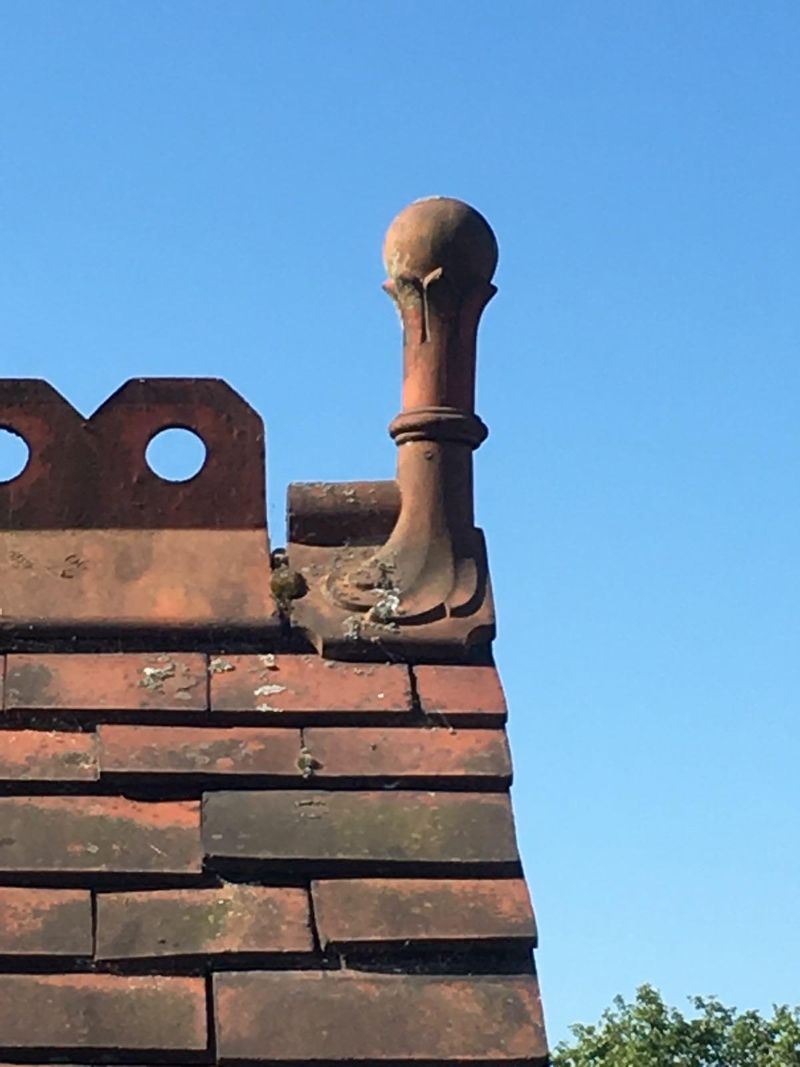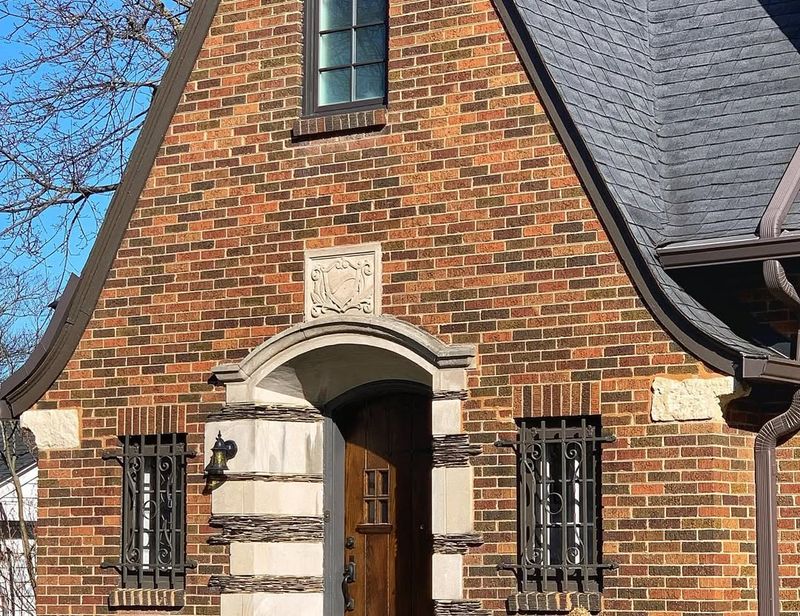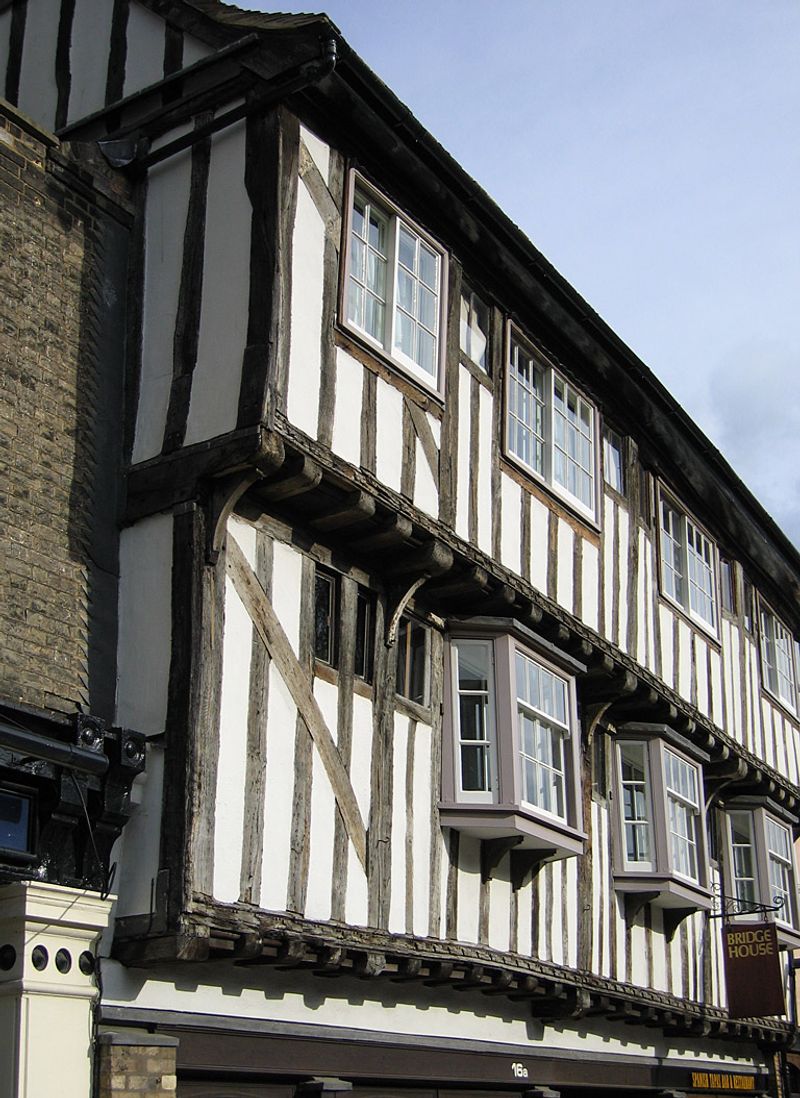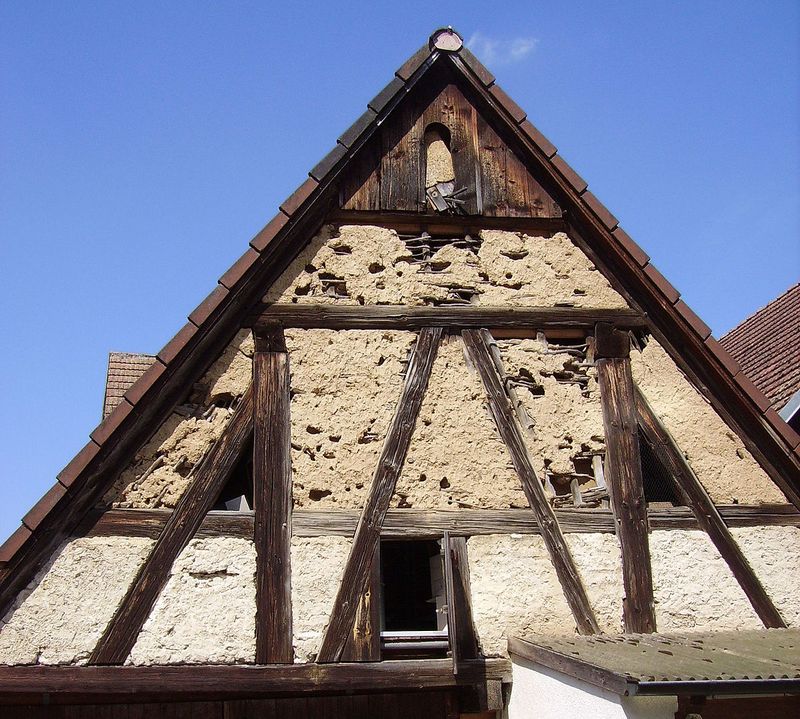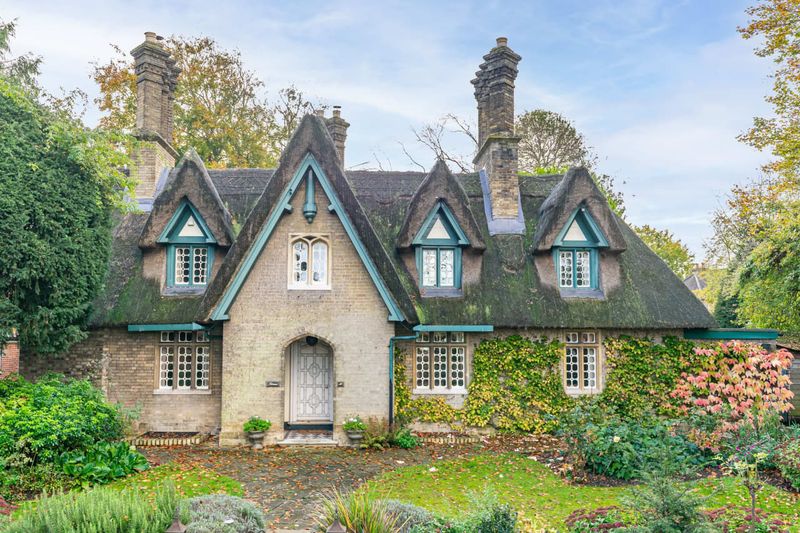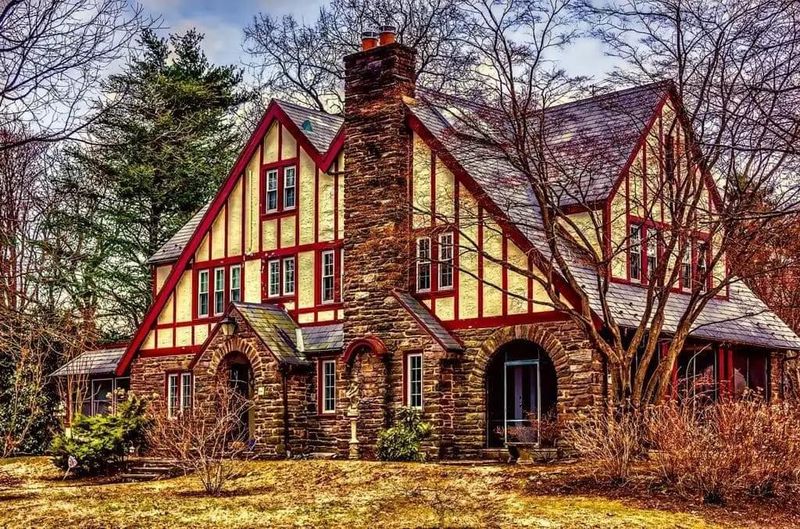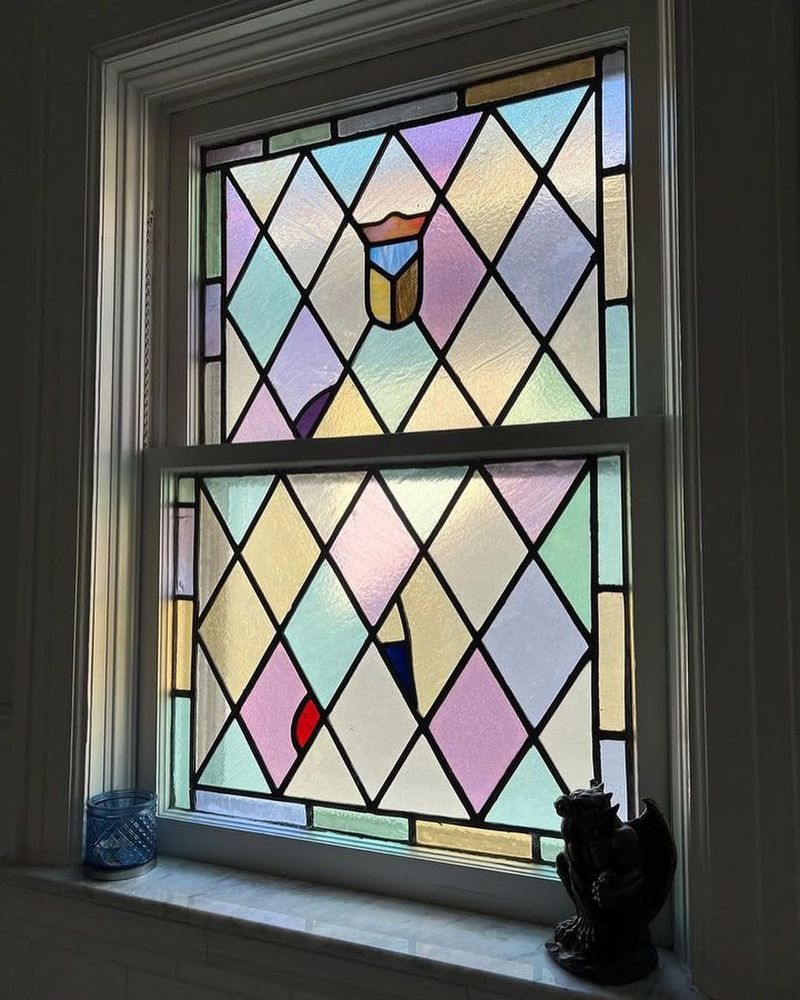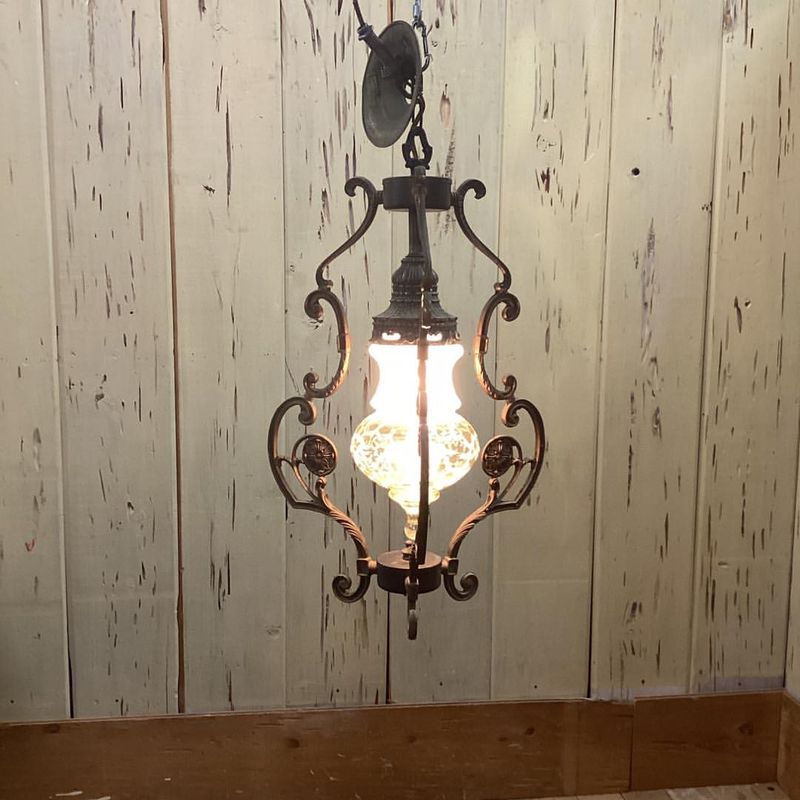The irresistible charm of Tudor houses – like something straight out of a storybook, yet strikingly timeless – has a way of stopping you in your tracks.
With their steep gables, decorative half-timbering, and romantic silhouettes, these homes don’t just stand – they speak. Each detail, from leaded glass windows to ornate chimneys, feels like a carefully preserved whisper from the past.
It’s no surprise they’re making a grand return, enchanting modern homeowners with their old-world soul. There’s beauty in their imperfections and warmth in their craftsmanship, a quiet kind of magic you can’t quite replicate.
So, if you’re ready to be swept away, come along and uncover 26 captivating features that bring Tudor architecture to life – you might just find yourself lost in its timeless allure.
1. Half-Timbered Exteriors
Have you ever marveled at the sight of a house with dark wooden beams set against a white plaster backdrop? That’s the magic of half-timbered exteriors, a quintessential Tudor feature. These exteriors evoke an aura of historical elegance, reminiscent of a bygone era where craftsmanship was celebrated.
They create a stunning visual contrast, making Tudor homes stand out in any neighborhood. Nestled amidst modern architecture, these charming facades remind us of fairy-tale cottages, warmly inviting us to explore their rich history and unmatched character.
2. Charming Casement Windows
Glimpses of the past come alive through charming casement windows. These windows, often adorned with diamond-shaped leaded glass panes, are a hallmark of Tudor homes. They offer more than just a view; they’re a portal to history.
While these windows may not boast the latest technology, their aesthetic appeal is timeless. The intricate patterns cast enchanting shadows indoors, creating an atmosphere of warmth and nostalgia. In a world dominated by sleek, modern windows, these charming casements hold their ground with pride and grace.
3. Steeply Pitched Roofs
Ever noticed the dramatic incline of a roof that seems to touch the sky? Steeply pitched roofs are a defining feature of Tudor architecture, designed to withstand heavy rain or snow. These roofs not only serve a functional purpose but also add a touch of grandeur to the overall structure.
The pronounced angle creates an awe-inspiring silhouette, reminiscent of medieval castles. With their weathered wooden shingles, these roofs tell tales of resilience and timelessness, making every Tudor house a fortress of style and substance.
4. Inviting Arched Doorways
Step into history through an arched doorway, a feature that sets Tudor homes apart. These doorways, often crafted from dark oak and adorned with wrought iron accents, exude an inviting charm. They beckon visitors with a promise of warmth and hospitality.
The graceful arch adds an extra layer of elegance, making each entryway a grand statement. In a world filled with straight lines and sharp angles, these doorways offer a soft, welcoming touch. Entering through one feels like stepping into another time, where tales of old await.
5. Ornate Stone Chimneys
Above the rooftops stand the ornate stone chimneys, a signature of Tudor architecture. These chimneys, often lavishly decorated with intricate stonework, are more than just functional elements. They are artistic expressions that add character and charm to the home’s silhouette.
Rising majestically into the sky, each chimney tells a story of the craftsmanship that defined an era. While modern homes may conceal their chimneys, Tudor houses celebrate them as integral pieces of architectural artistry. It’s like having a sculpture atop your home!
6. Enchanting Courtyards
A secluded haven in the middle of the bustle, Tudor homes’ courtyards are charming havens. These areas, which frequently have cobblestone walkways, an abundance of vegetation, and a central fountain, provide a calm setting ideal for unwinding.
They blur the boundaries between indoor and outdoor settings by fusing the two. Courtyards offer a breath of fresh air in an era of condensed life, encouraging relaxation and reflection. They provide a tranquil haven where time seems to stop, which is what makes them so endearing.
7. Exposed Wooden Beams
Look up, and you’ll find the rich, dark wooden beams elegantly crisscrossing the ceilings of Tudor homes. Exposed beams are a testament to the architectural integrity and craftsmanship of their time. They enhance the rustic charm of interiors while providing structural support.
Unlike modern, concealed beams, these are celebrated as beautiful design elements. Their natural texture and finish introduce warmth and depth, creating a cozy atmosphere. Embracing this feature is like inviting a piece of history to hover above, watching over with grace.
8. Picturesque Gables
The gables of a Tudor house are like the crown jewels of its exterior, presenting a picturesque and ornate appearance. These triangular extensions are adorned with various decorative patterns, adding a layer of complexity and beauty.
They contribute to the enchanting silhouette of the house, often giving it a storybook quality. Each gable is a canvas for craftsmen to showcase their artistic talents, making every home unique. Despite the passage of time, these charming features continue to captivate, proving that good design never goes out of style.
9. Robust Buttresses
Think of robust buttresses as the unsung heroes of Tudor architecture. They provide essential support to the structure, reminiscent of medieval fortresses. These buttresses project strength and stability, while also adding a dramatic flair to the exterior.
More than mere functional elements, they are symbols of durability that have withstood the test of time. With their commanding presence, buttresses enhance the visual appeal of Tudor homes, turning them into fortified havens. In a world of fleeting trends, they embody endurance and timelessness.
10. Welcoming Inglenooks
Cozy corners don’t get much better than a welcoming inglenook. Nestled around a large stone fireplace, intimate spaces like this are quintessential to Tudor homes. Inglenooks offer warmth and comfort, inviting residents to gather around the hearth on chilly evenings.
With cushioned seating and rustic charm, they are perfect spots for storytelling and relaxation. In contrast to expansive modern living areas, these nooks provide privacy and coziness. They are havens of tranquility, where one can escape the hustle and bustle of daily life and find solace.
11. Decorative Oriel Windows
Peeking out from the facade with elegance, oriel windows are like the charming eyes of Tudor architecture. Overhanging bays, often adorned with leaded glass panes, are both decorative and functional. They extend the interior space outward, creating a cozy nook bathed in natural light.
Unlike standard windows, oriels offer unique perspectives of the surroundings, often becoming favorite reading spots. Their distinctive appearance adds a touch of whimsy and sophistication to the exterior, making them delightful features that combine beauty and practicality.
12. Quaint Mullioned Windows
Did someone ask for windows with a touch of charm? Mullioned windows are a delightful sight in any Tudor house. Characterized by vertical stone or wooden divisions between the glass panes, they add an old-world allure to the facade.
They provide a distinct visual rhythm while allowing ample natural light to flood the interior. The interplay of light and shadow through these windows creates an ever-changing tapestry of reflections.
13. Textured Stucco Walls
Stucco walls with a tactile appeal bring a sense of depth and character to Tudor homes. These textured surfaces, often with a rough, earthy finish, are more than just a backdrop. They add visual interest and contrast to the dark wooden detailing.
The texture captures light and shadow, creating a dynamic facade that changes with the time of day. In an era of sleek, smooth surfaces, textured stucco walls stand out with their inviting, organic quality.
14. Grand Manor Staircases
Have you ever descended a staircase that felt like a royal affair? The grand manor staircases in Tudor homes are more than just functional – they are architectural statements. With intricately carved wooden railings and wide, sweeping steps, these staircases exude elegance and sophistication.
They serve as the centerpiece of the home, connecting the past with the present. These staircases celebrate opulence and craftsmanship. Walking down one truly feels like making a grand entrance in a historical drama”
15. Elaborate Pargework
The art of applying decorative plasterwork to walls, pargework, elevates the facade of Tudor homes to new heights. These intricate patterns and motifs transform plain surfaces into works of art. Each design tells a story, reflecting the tastes and craftsmanship of a bygone era.
Nowadays, when simplicity often reigns, elaborate pargework offers a refreshing departure with its ornate details. It adds texture and visual interest, making each home a canvas of creativity.
16. Rich Wooden Paneling
Step into a room adorned with rich wooden paneling, and you’re instantly transported to a world of elegance and warmth. Tudor homes often feature this dark, polished wood along the walls, adding depth and sophistication.
The natural grain and texture of the wood bring a tactile quality, creating an inviting atmosphere. Unlike modern, flat surfaces, wooden paneling introduces a sense of history and craftsmanship. It’s a perfect blend of form and function, offering both aesthetic appeal and insulation.
17. Elegant Leaded Glass
If you’re looking for the jewelry of Tudor homes, you’ll find it in leaded glass windows which add elegance and charm to every view. These intricate patterns, formed by joining small pieces of colored and clear glass with lead cames, create stunning visual effects.
They transform ordinary windows into works of art, casting colorful reflections indoors. The craftsmanship behind each piece is a testament to the skill and artistry of the artisans. It’s like having a gallery of masterpieces right in your own home.
18. Distinctive Finials
Finials are like the exclamation points of Tudor architecture, crowning gables with flair. These decorative ornaments, often carved from stone or wood, add a touch of whimsy and elegance. Each finial is a unique creation, showcasing the artistic talents of craftsmen from a bygone era.
They provide a sense of completion and refinement, tying together the architectural elements. In a landscape of monotonous rooftops, distinctive finials stand out as symbols of creativity and attention to detail. They’re the perfect finishing touch, making every Tudor house a masterpiece.
19. Intricate Brickwork
More than just a structural element, brickwork is also a canvas for intricate designs. The interplay of red and dark bricks creates captivating patterns that add depth and character to the facade. They reflect the skill and artistry of bricklayers from the past, turning ordinary walls into eye-catching features.
In a world of uniform surfaces, Tudor brickwork offers a refreshing departure with its unique textures and colors. It’s a testament to the enduring appeal of craftsmanship, proving that even humble bricks can tell a captivating story.
20. Graceful Jetties
Adding an intriguing architectural twist to Tudor homes with upper floors gracefully overhanging the lower ones, jetties truly get to shine. Supported by sturdy wooden brackets, these extensions create additional space and visual interest.
They reflect the ingenuity of designers who maximized space without compromising style. It’s as if the house is reaching out, eager to share its stories with the world.
21. Cozy Wattle and Daub
Wattle and daub walls bring a sense of coziness and rustic charm to Tudor homes. This age-old construction technique involves weaving wood strips and coating them with a mixture of clay, straw, and dung.
The resulting surface, often uneven and textured, adds character and warmth. In an era of smooth, synthetic materials, wattle and daub stand out as a testament to sustainable and resourceful building practices.
They remind us of a time when homes were crafted with care and intention, offering a snug retreat from the world outside.
22. Decorative Vergeboards
Lining the roof edges with decorative flairy vergeboards are the ornate frames of a Tudor house. Wooden boards, often carved with intricate patterns, enhance the visual appeal of the facade. They add a layer of sophistication, transforming plain rooflines into artistic features.
Each design is a nod to the artistic spirit of the past, making every house unique. Their presence is like an artist’s signature, celebrating individuality and creativity.
23. Rustic Thatched Roofs
Bringing a touch of rustic charm to Tudor homes with their natural, textured appearance are thatched roofs. Made from straw or reeds, these roofs offer excellent insulation, keeping interiors cool in summer and warm in winter.
The golden hue of the thatch adds warmth and character, making each house look like a storybook cottage. With all of the manufactured materials around, thatched roofs stand as a reminder of traditional craftsmanship and sustainability.
24. Sturdy Timber Frames
Tudor homes are primarily made on timber frames, which provide them stability and strength due to their sturdy design. A unique and long-lasting structure is produced by the interlacing of these dark, strong oak beams with plaster or stone.
The exposed structure highlights the period’s craftsmanship while adding character and texture. Timber frames embrace its dual roles as decorative and practical components, in contrast to concealed contemporary supports.
25. Timeless Stained Glass
In Tudor mansions, stained glass windows are classic pieces that catch and reflect light like priceless jewels. With their elaborate patterns, these colorful mosaics turn regular glass into stunning pieces of art.
Each window’s artistry is a tribute to the talent and commitment of earlier craftspeople. Stained glass adds originality and history to a world of boring panes. It’s similar to having a work of art that moves in time with the sun.
26. Antique Iron Fixtures
Tudor-style iron fixtures are similar to the jewels that embellish a well-dressed ensemble. Wooden doors and windows gain personality and beauty with these wrought iron handles, hinges, and accents.
A pleasing combination of materials is produced by the contrast between the warm wood tones and the dark, aged metal. Every fixture is a work of art that showcases the blacksmiths’ talent and artistry.
These vintage fixtures stand out as distinctive, handcrafted pieces that convey a tale of craftsmanship and tradition in an era of mass-produced hardware.

